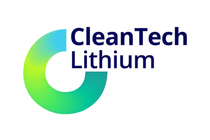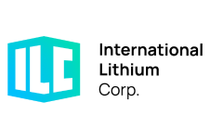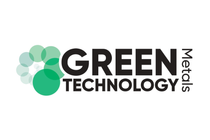Western Lithium: Optimizing Opportunities in Lithium
Western Lithium’s long-term goal is to become a dominant player in the battery-grade lithium carbonate market; however, in the near-term it’s focused on generating cash flow from producing an essential specialty drilling additive for the oil and gas industry.
The Kings Valley project encompasses five zones of lithium mineralization over an area of 8,480 hectares. Earlier this month, Western Lithium announced that the Bureau of Land Management (BLM) has accepted its plan of operations on the project. An environmental assessment is now underway, with permitting expected to be completed within 12 months. But it’s not lithium that’s being produced — not yet. Hectorite clay’s thermal stability makes it ideally suited for use as a viscosifier in the drilling fluids required for high-pressure and high-temperature deep, directional drilling applications in the oil and gas industry.
Western Lithium’s long-term goal is to become a dominant player in the battery-grade lithium carbonate market; however, in the near-term, the company is focused on developing a value-added specialty hectorite drilling additive business to take advantage of strong growth in the oil and gas drilling industry. That’s a smart move given that the company will be able to generate positive cash flow by early next year, when many of its junior resource peers are struggling to lock down financing.
“Western Lithium is looking carefully at this strategy as it would generate cash flow from selling our unique specialty hectorite products for deep drilling applications to develop new sources of natural gas and oil,” stated Western Lithium’s CEO, Jay Chmelauskas, in a press release. “The specialty clay market and other associated products to service this energy sector, have seen double digit growth over the past year, and we expect this trend to continue.”
Western Lithium plans to build a processing facility to produce organoclays (viscosifiers in drilling fluids) from the hectorite clay mined at Kings Valley and has targeted early 2014 for the commencement of commercial production. Construction of the plant will be financed by the initial $11-million funding tranche of a Royalty Purchase Agreement signed with mine financing firm Red Kite. “The fact that they’ve found another way to monetize the assets at Kings Valley and provide cash flow in this tough market is really unique,” Jeb Handwerger, mining analyst and publisher of the Gold Stock Trades website told Lithium Investing News. “Receiving $11 million in today’s market is impressive.”
The plant is anticipated to have an initial capacity of 10,000 tons per year and the company expects to see positive cash flow within 12 months of a production decision. Having a positive cash flow will allow Western Lithium to survive the current downturn in the mining sector and eventually advance as the lithium market rebounds in the coming years, said Handwerger.
Derisking lithium production from clay
The Kings Valley deposit’s lithium-bearing clay lies near the surface, meaning it can be easily mined by open-pit methods. “I believe for the US it is a strategic asset, especially if you look at the long-term fundamentals in the lithium market,” commented Handwerger.
For Western Lithium to gain the attention of the lithium battery sector, it will need to convince investors, analysts and end users that it can extract lithium carbonate from clay on a commercial scale — a feat that has yet to be achieved — and at a production cost that is competitive with Chile’s low-cost brine operations. The company plans to extract lithium from the clay using a pyrometallurgical, or roasting, method first developed by Chevron Resources in the 1980s.
Western Lithium intends to derisk the lithium mining side of the project by constructing a lithium demonstration plant to test the viability of its lithium extraction process on an industrial scale. The company plans to use funds from the initial tranche of the Royalty Purchase Agreement with Red Kite to design and engineer the plant. It has until the first quarter of 2016 to complete the design and engineering stage and obtain regulatory assurances from the BLM. If it does that, it will be able to obtain a second tranche of funding totalling $9 million for the construction of the lithium demonstration plant.
Western Lithium signed an agreement in 2011 with the US Department of Energy’s Argonne National Laboratory to analyze and develop a battery specification for the company’s lithium carbonate products. Lithium carbonate from the Kings Valley project was tested for performance by Argonne, which used the material to manufacture several electrochemical test cells with three different cathode types (spinel LiMn2O4, olivine LiFePO4 and layered LiNi0.25Mn0.75O4). Data collected from testing shows excellent cycle performance and a good voltage profile.
In January 2013, Western Lithium released a prefeasibility study on the Kings Valley project. It demonstrates a pre-tax net present value of $551 million at an 8-percent discount rate. Initial capex, including contingency, is expected to be approximately $248 million, with additional development capital of $161 million to double lithium carbonate production to 26,000 metric tons per year. The mine has an estimated operating life of 20 years with expansion potential.
Securities Disclosure: I, Melissa Pistilli, hold no direct investment interest in any company mentioned in this article.
Jeb Handwerger holds direct investment interest in Western Lithium.





